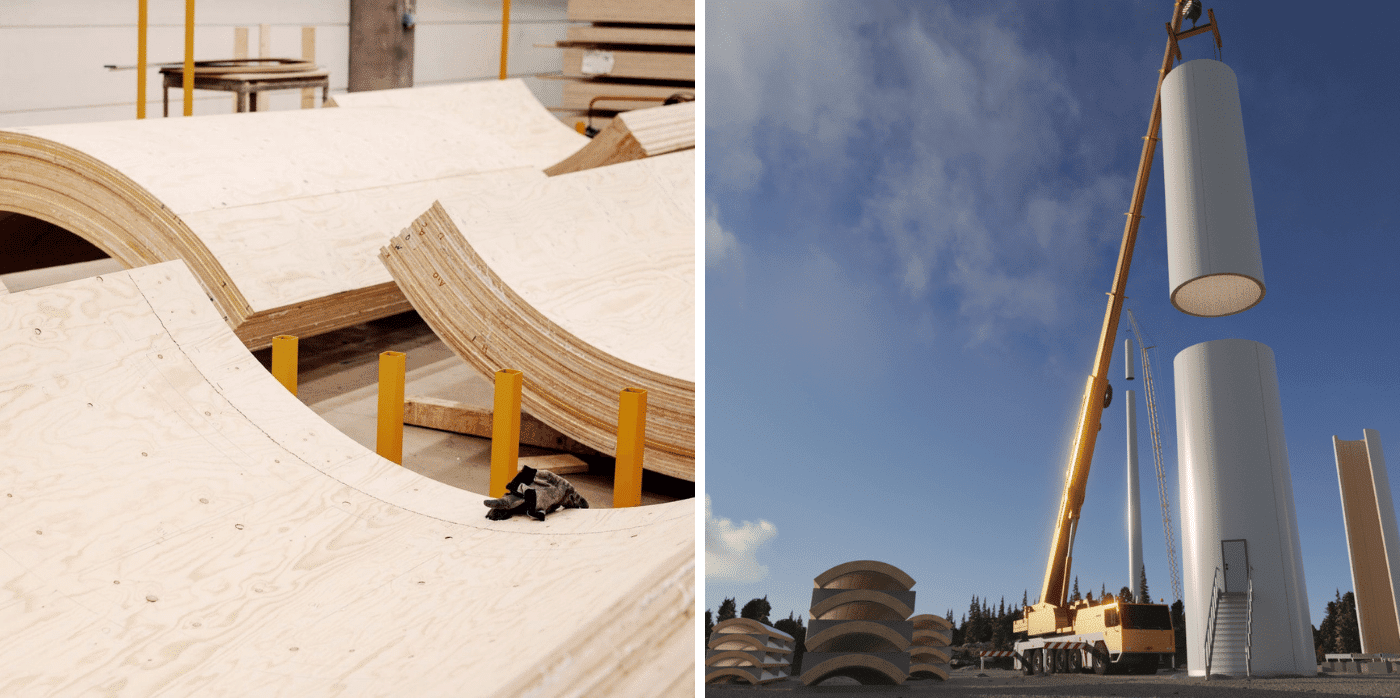Spotted: Today, most wind turbine towers are made of tubular steel. But a partnership is promoting a surprising alternative: wood. Laminated veneer lumber (known as ‘LVL’) is a material made up of stacked layers of thin wood. Pound for pound it is stronger than steel, and Finnish LVL producer Stora Enso is teaming up with Modvion – a company that uses the engineered wood product to make next-generation turbine towers.
Modvion’s towers are built in lightweight modules. This approach has two key benefits from an engineering and construction perspective. First, the modular design makes it possible to build taller towers that can reach stronger winds, leading to more cost-efficient energy production. And second, the modules can be easily transported on public roads – without the need for permits or road reconstructions.
But perhaps the most compelling reason for making the switch from steel to LVL is the sustainability benefits of using a wood-based material. Wood is a renewable resource, and using it reduces the carbon dioxide emissions associated with the turbine tower by 90 per cent. Moreover, using wood as a construction material locks away the carbon dioxide absorbed by the tree during its lifetime for the long term.
“The commitment of Stora Enso to replace fossil-based materials with renewables is a perfect match for Modvion,” explains Otto Lundman, CEO of Modvion. “To solve the climate crisis, we need more renewable energy as well as increased use of sustainable, wooden constructions,” he adds.
Springwise has spotted several recent innovations that use wood as a construction material. These include a skyscraper made from cross-laminated timber, a wall system made from waste wood, and engineered wooden walls strong enough to replace all above-ground steel and concrete.
Words: Matthew Hempstead
1st June 2022
Email: info@modvion.com
Website: modvion.com

